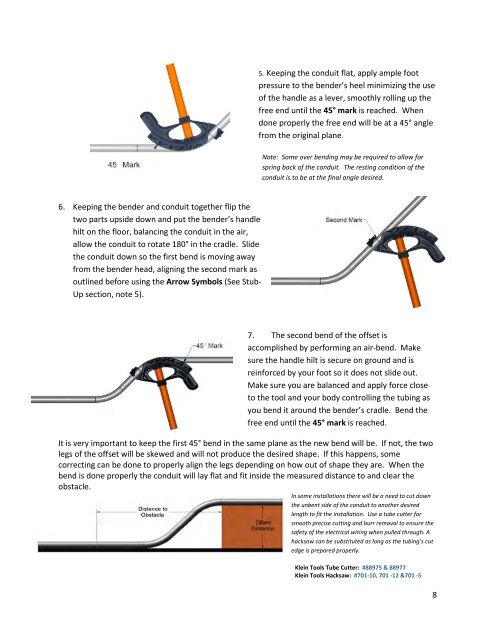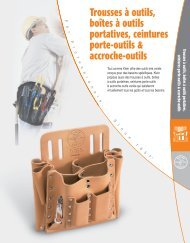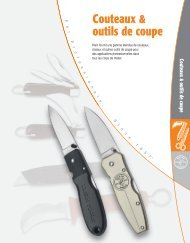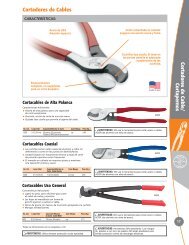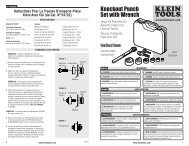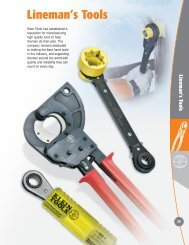Conduit Bending Basics (Iron - Klein Tools
Conduit Bending Basics (Iron - Klein Tools
Conduit Bending Basics (Iron - Klein Tools
Create successful ePaper yourself
Turn your PDF publications into a flip-book with our unique Google optimized e-Paper software.
6. Keeping the bender and conduit together flip the<br />
two parts upside down and put the bender’s handle<br />
hilt on the floor, balancing the conduit in the air,<br />
allow the conduit to rotate 180° in the cradle. Slide<br />
the conduit down so the first bend is moving away<br />
from the bender head, aligning the second mark as<br />
outlined before using the Arrow Symbols (See Stub-<br />
Up section, note 5).<br />
5. Keeping the conduit flat, apply ample foot<br />
pressure to the bender’s heel minimizing the use<br />
of the handle as a lever, smoothly rolling up the<br />
free end until the 45° mark is reached. When<br />
done properly the free end will be at a 45° angle<br />
from the original plane.<br />
Note: Some over bending may be required to allow for<br />
spring back of the conduit. The resting condition of the<br />
conduit is to be at the final angle desired.<br />
7. The second bend of the offset is<br />
accomplished by performing an air-bend. Make<br />
sure the handle hilt is secure on ground and is<br />
reinforced by your foot so it does not slide out.<br />
Make sure you are balanced and apply force close<br />
to the tool and your body controlling the tubing as<br />
you bend it around the bender’s cradle. Bend the<br />
free end until the 45° mark is reached.<br />
It is very important to keep the first 45° bend in the same plane as the new bend will be. If not, the two<br />
legs of the offset will be skewed and will not produce the desired shape. If this happens, some<br />
correcting can be done to properly align the legs depending on how out of shape they are. When the<br />
bend is done properly the conduit will lay flat and fit inside the measured distance to and clear the<br />
obstacle.<br />
In some installations there will be a need to cut down<br />
the unbent side of the conduit to another desired<br />
length to fit the installation. Use a tube cutter for<br />
smooth precise cutting and burr removal to ensure the<br />
safety of the electrical wiring when pulled through. A<br />
hacksaw can be substituted as long as the tubing’s cut<br />
edge is prepared properly.<br />
<strong>Klein</strong> <strong>Tools</strong> Tube Cutter: #88975 & 88977<br />
<strong>Klein</strong> <strong>Tools</strong> Hacksaw: #701-10, 701 -12 &701 -S<br />
8


